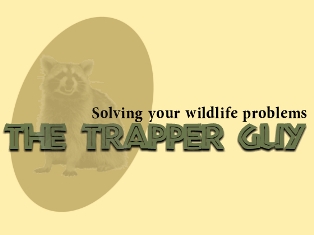|

727-710-0373
I am NOT an authorized gopher tortoise agent. Click here for gopher tortoise help. Click here
Click
here for a free estimate for other wildlife problems Gopher
Tortoise
The
Gopher Tortoise is a threatened
and protected species in the Tampa
Bay area. Once it was very numerous
but its habitat of upland dry
land was also sought after by
developers.
The
Gopher Tortoise is usually first
noticed by its burrow which can
be distinguished from an armadillo
burrow by the flat bottom and
arched top. The armadillo burrow
is usually oval in shape without
the flat bottom.
Gopher
Tortoises do not cause damage
and are not aggressive. Usually
the only reason to relocate them
is because of planned develpoment
projects. Relocation is
only done with a permit from the
FWC
and by an authorized agent. The
Trapper Guy is not an authorized
agent. We can help you
find one if needed.
Gopher
Tortoises are relocated from areas
to be disturbed by structures
to another area on site and in
some cases off site..
If
you have a Gopher Tortoise in
your yard the best thing to do
is leave it alone. Give it a name
and you will have a conversation
piece for guests for many years
to come!
If you feel it is causing problems
then it will be up to the FWC
if it can be relocated.
Call
today!
727-710-0373
|
Gopher
Tortoise in the news:
Gopher tortoise
may be classified as a threatened species
By CATHERINE DOLINSKI
| The Tampa Tribune
Published: September
9, 2009
More about the gopher
tortoise's habitat
TALLAHASSEE - The gopher tortoise may
soon get federal protection as a threatened
species, the U.S. Fish and Wildlife
Service announced today.
Florida already classifies
the gopher tortoise as a threatened,
due largely to its loss of habitat.
Upon reviewing a petition from wildlife
conservation groups, the U.S. wildlife
agency said today that it will now investigate
whether gopher tortoises in eastern
states need federal protection as well.
Western-range gopher tortoises already
appear on the federal government's list
of threatened animals.
With gopher tortoises
living in all 67 counties, Florida is
the animals' primary home in the southeast.
Among their local hangouts: the Egmont
Key wildlife refuge, where about 1,800
of the animals reside. The proposed
federal protection would apply not only
to Florida but to Georgia, Alabama and
South Carolina, where the animals also
exist.
In practice, federal
listing of the animals would not create
a load of additional land restrictions
or regulations, said Chuck Underwood,
a Florida representative of U.S. Fish
and Wildlife. It would, however, extend
new protections for the tortoise on
federal land, requiring U.S. agencies
conducting or planning activities in
tortoise habitat to consult with the
federal wildlife authorities.
Today's announcement
reflects the first step forward in a
review of the tortoise's status, triggered
by a petition received in January 2006
from Save Our Big Scrub, Inc. and Wild
South. Because of a lack of funding,
the federal wildlife agency initially
failed to act on the petition -- prompting
the conservation groups to threaten
a lawsuit if no "timely response"
followed.
"This notice constitutes
our 90-day finding on the petition to
list the gopher tortoise in the eastern
portion of its range," the U.S.
Fish & Wildlife Service stated in
today's Federal Register.
According to the petitioners,
urban development within the gopher
tortoise's eastern range has increased
by 614 percent. Wildlife officials questioned
that figure, but agreed that increased
development and the destruction of natural
pine forests has cost the species' a
considerable portion of its habit –
about 16 percent between 2003 and 2006.
That followed much a
heavier loss of natural pine habitat
over the preceding 50 years, the conservation
groups claimed. Their petition includes
a statement from the Florida Fish and
Wildlife Conservation Commission that
"it may be inevitable that gopher
tortoises will be largely eliminated
from private lands in Florida within
the next three generations, which would
represent a 60-65 percent decline in
tortoise habitat. We anticipate similar
losses in the other range states."
Underwood said the federal
agency will likely come to a decision
on classifying the gopher tortoise late
in 2009 or early in 2010.
Reporter Catherine Dolinski
can be reached at (850) 222-8382
|